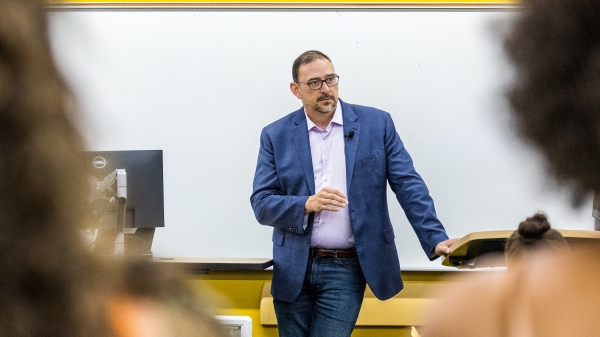Study links deforestation to drug trafficking in Central America

A bird's-eye view of forests in Guatemala. Photo courtesy of Dennis Jarvis
Cocaine trafficking in Central America, a long-known and often discussed topic, is having a surprising impact — shrinking tropical forests.
A recent study, published in the journal Environmental Letters, estimates that up to 30 percent of the region’s tropical forest has been cut down and cleared out over the past 10 years as a by-product of the drug trade.
“Drug trafficking not only affects areas where drugs are produced or consumed but also areas of transit,” according to Karina Benessaiah, a doctoral student with Arizona State University’s School of Geographical Sciences and Urban Planning and one of the paper’s co-authors.
Large, rapid forest clearings correlate with the movement of drugs through the region, particularly in Caribbean Honduras, Guatemala and Nicaragua.
“Over the same period of rapid deforestation, U.S.-led supply-side militarized interdiction drug policies that target the production and movement of drugs has pushed cartels from flying planes into Mexico and into overland, air and marine routes in Central America to move the cocaine northward,” said Elizabeth Tellman, also a co-author of the paper and doctoral student with the ASU’s School of Geographical Sciences and Urban Planning. “Interdiction pushes the movement of drugs into remote, forested regions of Central America.”
It’s not just the movement of the cocaine that is impacting the forest. The money produced from the drug trade also leaves its mark on the land. “An estimated $6 billion of illegal profit is left in Central America as a result,” said Tellman. “This money needs to be legitimized, or laundered, and it is often done so by converting forest into other land uses, like oil palm production and cattle ranching.”
Swaths of land across the region disappearing could create irreparable changes to the ecosystem. The region, known as the MesoAmerican Biological Corridor, is home to 7 to 10 percent of the world’s endemic species. It is estimated that between 30 percent and 60 percent of the deforestation is taking place within biodiverse and internationally protected areas.
“Drug trafficking — and the cat-and-mouse game between traffickers and law enforcement in the war on drugs — affects local people and the environment,” said Benessaiah. “Forests are lost, and that matters for conservation but it also matters because people are losing their livelihoods.”
The region is home to more than 80 ethnic groups and many impoverished farmers who depend on the land for survival. The high rate of deforestation poses a direct threat to these groups’ livelihoods and security.
According to the researchers, the “war on drugs” has only exacerbated the issue and pushed the drug trade deeper and deeper into the forests. Their proposed solution? Environmental policy and drug policies can no longer live in silos.
“Conservation policy must be better aligned with drug policy, with the recognition that supply-side interdiction efforts may cause severe environmental damage in this biologically and ethnically diverse, sensitive region,” said Tellman.
You can read their full paper in the May 2017 issue of Environmental Research Letters.
Photo used is courtesy of Dennis Jarvis, licensed under CC BY 2.0.
More Law, journalism and politics

Arizona secretary of state encourages students to vote
Arizona Secretary of State Adrian Fontes looked right and left, taking in the more than 100 students who gathered to hear him…

Peace advocate Bernice A. King to speak at ASU in October
Bernice A. King is committed to creating a more peaceful, just and humane world through nonviolent social change.“We cannot…

CNN’s Wolf Blitzer to receive 41st Walter Cronkite Award for Excellence in Journalism
Wolf Blitzer, the longtime CNN journalist and anchor of “The Situation Room With Wolf Blitzer,” will accept the 41st Walter…